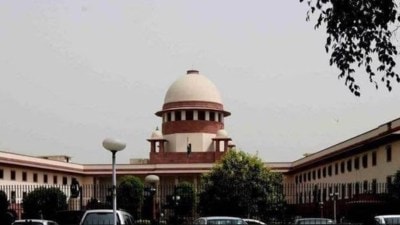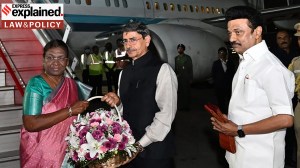Final four-lane stretch to Chandigarh faces land hurdle
The National Highway between Ambala and Chandigarh, notorious as the killer stretch, is at last taking baby steps towards safety and decongestion.

The National Highway between Ambala and Chandigarh, notorious as the killer stretch, is at last taking baby steps towards safety and decongestion.
The official inauguration of works for four-laning this highway was on May 15, but a lot needs to be done, especially land acquisition, before the much-awaited project can pick up.
The demand for four-laning of this section of NH 21 and NH 22 — which sees heavy traffic from Punjab, Haryana, Chandigarh, and Himachal Pradesh — dates back almost a decade. The Confederation of Indian Industries (CII) had even called for eight-laning of the stretch, in view of industrial growth in Chandigarh, Mohali, and Baddi.
Convinced, the NDA regime gave the green light under the National Highway Development Project, with then surface transport Minister Maj Gen B C Khanduri (retd) conducting the bhoomi pujan. But the project lost steam once the UPA came to power.
It took the Manmohan Singh government two years to get working on the 36-km corridor, which was finally awarded to GMR Ambala Chandigarh Expressway Pvt Ltd (GMRACE) for Rs 298 crore on a build-operate-transfer (BOT) basis for 20 years, last September.
The company began operations on May 15 by laying the foundation of the 2.7-km flyover at Zirakpur, bordering Chandigarh, a frequent bottleneck.
Fluorescent NHAI boards on the roadside and the hum of machines indicate that work is in progress.
Col Sanjiv Puri (retd), GMRACE’s chief project manager, says they are confident of meeting the November 16, 2008, deadline.
With the Punjab forest department — a major chunk of the corridor falls in in Punjab— giving its clearance for felling trees, eucalyptus and sheesham trees lying piled up alongside.
Amrik Singh, a field assistant of the forest department, says four timber auctions have been held since the beginning of the felling in mid-April.
“Though our deadline is May 30, it’ll take a week more because of labour shortage,’’ he said.
Derabassi, a dusty town 12 km from Chandigarh, already has a toll plaza over a four-lane overbridge. Dotting the stretch to Ambala are boards of colonies planned by realtors.
Both the Punjab and the Haryana governments say they have sent notices for land acquisition: there are factories and schools along the narrow road that need to move away for the road widening.
Sources say the two state governments have completed only 20 per cent of the tree-felling and 30 per cent of land acquisition. But Col Puri says he’s not yet pressing the panic button, as the deadline for clearance operations is not over still.
Shopkeepers in Baldev Nagar, the entry point to Ambala, vaguely remember notices sent to them four years ago.
Krishan Lal, who runs a boring works, seemed confident he and other shopkeepers won’t be asked to go.
“Even in Ambala Cantt, they chose to make a flyover instead of touching the shops,” he said. “They can’t do anything to us.”
But he also looks forward to the four-laning, for “it’ll halve the travel time from Ambala to Chandigarh from one hour to half an hour.”
The project will see upgradation of a total of 12 bridges, including three parallel to Yadavindra bridge at Ambala, work on which will begin in September. The 9.75 metre wide bridge next to Yadavindra Bridge on the Ambala side will connect with the proposed ramp that will bring traffic from Panchkula and Kalka side onto the flyover. And then on to Delhi.
All these bridges will be built by ITD Cementation, an Indian subsidiary of Italian-Thai Development Public Company Limited (ITDPCL).
Ajay Verma, the administrative officer of ITD Cem, at work on the Zirakpur flyover, is hopeful that the project will be completed in two and a half years. So is everyone else. As Col Puri puts it: “As of now, we are on a roll.”
Photos




- 01
- 02
- 03
- 04
- 05



























